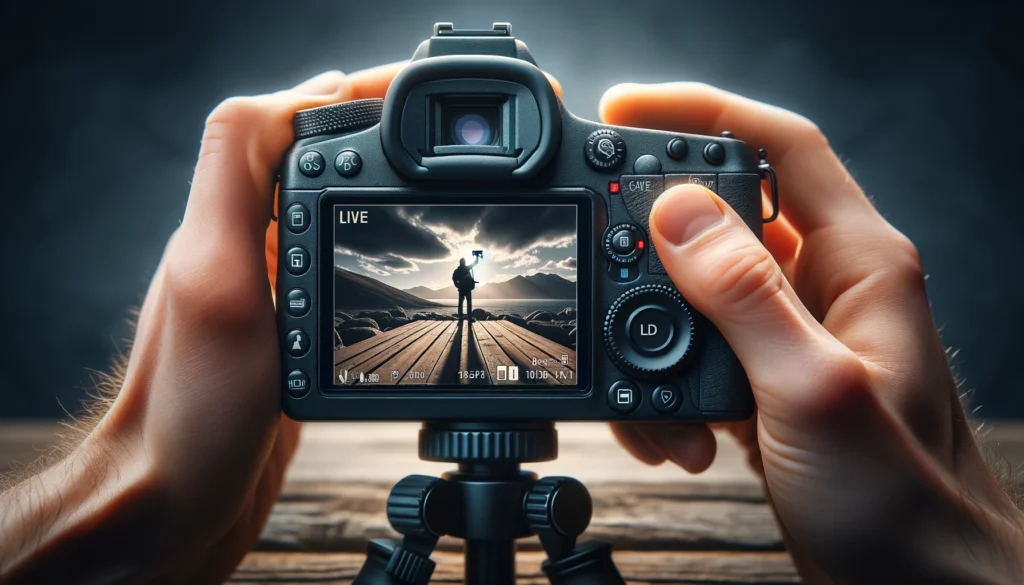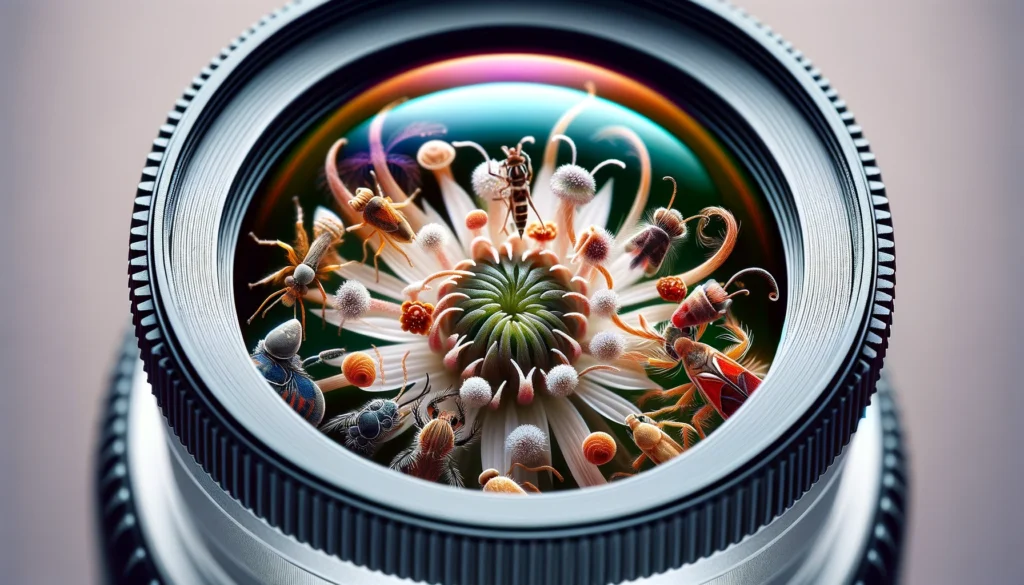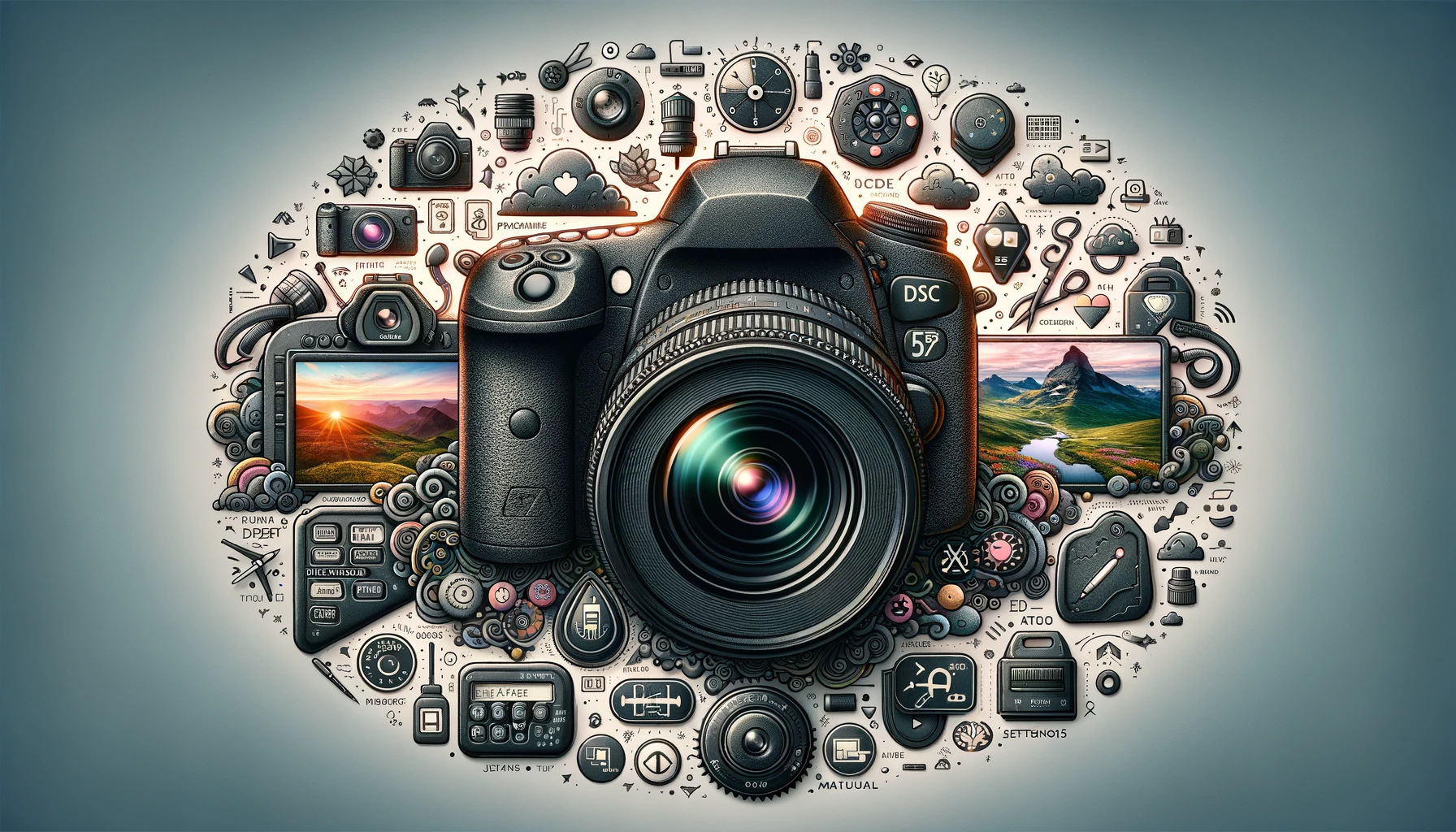Table of Contents
Welcome to the next chapter in our series on DSLR photography, where we decode the essential terminology from “J” to “P”. This comprehensive guide is designed to enlighten both novices embarking on their DSLR photography journey and seasoned photographers aiming to revisit the basics. Understanding these terms is crucial for harnessing the full potential of your DSLR camera and elevating your DSLR photography. Let’s explore these concepts in detail, enriching your photographic vocabulary and skill set.
JKL and M – Jumpstarting Your DSLR Photography Knowledge

JPEG – The Universal Image Format
- Overview – JPEG is a popular image format known for its balance between quality and file size, thanks to its compression capabilities. It’s ideal for sharing and storing photos without using extensive storage space.
Landscape Mode – Capturing Nature’s Essence
- Creative Modes – Specifically designed for landscape DSLR photography, this mode enhances natural elements like the sky and foliage, bringing vividness to your outdoor shots.
Live View Shooting – Seeing Through the Screen
- Modern DSLR Feature – With Live View, the camera’s LCD screen becomes your viewfinder, offering a real-time preview of your shot, especially useful for stationary subjects and tripod use.
Macro Lens – The Close-Up Specialist
- Lens Choice – Macro lenses are engineered for close-up DSLR photography, allowing you to capture detailed shots of small subjects with clarity and precision.
Manual Exposure – Taking Control
- Creative Freedom – Manual exposure mode lets photographers manually set the shutter speed and aperture, providing complete control over the image’s exposure.
Manual Focus – Precision at Your Fingertips
- Focus Technique – Manual focus allows for meticulous control over the focus point, essential for challenging situations or creative effects.
Maximum Aperture – Understanding Lens Brightness
- Lens Characteristics – The maximum aperture of a lens indicates its largest possible opening, crucial for low-light DSLR photography and achieving a shallow depth of field.
Metering Mode – Perfecting Exposure
- Exposure Measurement – Different metering modes, such as Evaluative, Center-weighted, and Partial, assist in determining the optimal exposure settings for varied lighting conditions.
Monochrome – The Art of Black and White
- Picture Style – Monochrome mode transforms your images into black and white, emphasizing textures and contrasts without the influence of color.
Movie Shooting – DSLR Cinematography
- Video Capabilities – Modern DSLRs offer impressive video shooting capabilities, from standard definition to full HD, allowing for high-quality video production.
N, O, and P – Navigating Advanced Concepts

Neutral Mode – Subtlety in Color and Contrast
- Picture Style – Produces images with soft colors and contrast, ideal for extensive post-processing.
Noise – The Challenge of Clarity
- Image Quality – Defined by the appearance of grain or artifacts in photos, noise is often a byproduct of high ISO settings or long exposures.
Normal Lens – The Human Eye Perspective
- Lens Perspective – A 50mm lens on a full-frame camera offers a field of view closest to that of the human eye, making it versatile for a variety of subjects.
One-Shot Autofocus – For Static Subjects
- Autofocus Mode – Optimized for subjects that remain still, ensuring precise focus before capturing the image.
Overexposure – The Balance of Light
- Exposure Considerations – Occurs when too much light reaches the sensor, resulting in a brighter image than intended.
Pan Focus – Achieving Broad Sharpness
- Depth of Field – Utilizes a small aperture to ensure that the entire scene, from foreground to background, is in sharp focus.
Panning – Capturing Motion
- Creative Technique – Involves moving the camera along with the subject, rendering it sharply against a blurred background, conveying motion.
Partial Metering – Focused Exposure
- Metering Technique – Targets a specific area for metering, useful in high-contrast scenes to maintain exposure to the main subject.
Picture Style – Customizing Your Image
- Creative Control – DSLRs offer various picture styles, including Standard, Portrait, and Landscape, allowing for in-camera color and tone adjustments.
Pixel – The Building Blocks of Digital Images
- Fundamentals – Pixels are the smallest units of a digital image, with higher pixel counts translating to higher resolution.
Pixel Count – Measuring Resolution
- Image Resolution – Refers to the total number of pixels on a sensor, affecting the detail and quality of the resulting photograph.
Portrait Image – Flattering Your Subject
- Picture Style – Softens and enhances skin tones, ideal for portraits that require a gentle, flattering look.
Predictive Autofocus – Keeping Up with the Action
- Advanced Autofocus – Continuously adjusts focus on moving subjects, predicting their next position to maintain sharpness.
Programme Auto Exposure – Simplifying Exposure
- Automatic Mode – Automatically selects both aperture and shutter speed based on the scene’s lighting, balancing ease of use with optimal exposure.
FAQs
How does JPEG compression affect my images?
JPEG compression reduces file size by slightly lowering image quality. The impact is usually negligible, but for the highest quality, especially in post-processing, consider shooting in RAW.
When should I use manual focus over autofocus?
Manual focus is ideal in low light, when capturing macro shots, or when you require precise control over the focus point that autofocus may not reliably provide.
What’s the advantage of using a normal lens?
A normal lens provides a natural perspective, making it excellent for a wide range of DSLR photography styles, from street photography to portraits, without the distortion of wide-angle or the compression of telephoto lenses.
Conclusion
Exploring the DSLR alphabet from “J” to “P” unveils a world of possibilities for photographers. Each term we’ve dissected plays a crucial role in the art and science of photography, from the technicalities of JPEG compression to the creative potential of program auto exposure. Embrace these concepts, experiment with your camera settings, and let your creativity flourish. Remember, mastery in photography comes from understanding the fundamentals and continually challenging yourself to grow. Keep shooting, keep learning, and enjoy the journey through the vast and vibrant landscape of DSLR photography.

